Camera Test: Leica M8
The classic rangefinder hits the digital autobahn at 10.3MP. We take a test drive.
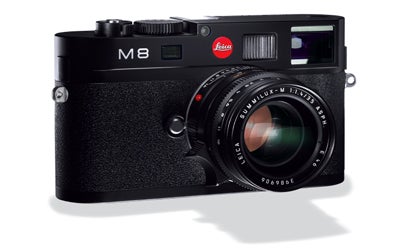
We may earn revenue from the products available on this page and participate in affiliate programs. Learn more ›
Camera Test: Leica M84022243107021LeicaM8Leica camera owners are a special breed that casual photographers can’t understand. For the uninitiated, the idea that anyone would shoot with a 35mm rangefinder camera that lacks motor drive, autofocus, or even a decent zoom lens — yet costs thousands of dollars — is absurd. But Leica lovers revel in the knowledge that they are taking pictures with a German-engineered handcrafted instrument that is built stronger than any other camera. This is the legacy (and customer loyalty) that Leica hopes to extend into the digital era with its new 10.3MP Leica M8 ($4,800, street). We shared our first impressions of a preproduction M8 in the November 2006 issue, and couldn’t wait to hit the streets (and the Pop Photo Lab) with a production version. We ran into some image-quality surprises along the way, including an abnormally high sensitivity to IR radiation that produces a purple cast on some dark fabrics and objects. (Leica has a solution that may not appeal to all. More on that below.) However, there were no surprises with how this camera is built: the M8 is a tank, with a sturdy all-metal magnesium-alloy body and milled-brass top and bottom plates. From the front and top it looks and feels very much like a 35mm M-series camera, with a familiar offset optical rangefinder and a flat-top design instead of an SLR-style viewfinder hump. There are just two large dials on top, one to control shutter speed and the other a multi-function power button, drive mode selector, shutter button, and cable-release connector. On the far left is a small circular window that shows the battery status and remaining shots on your memory card. The only thing missing (if this were a classic 35mm M) is a top-mounted rewind lever.
Leica camera owners are a special breed that casual photographers can’t understand. For the uninitiated, the idea that anyone would shoot with a 35mm rangefinder camera that lacks motor drive, autofocus, or even a decent zoom lens — yet costs thousands of dollars — is absurd. But Leica lovers revel in the knowledge that they are taking pictures with a German-engineered handcrafted instrument that is built stronger than any other camera. This is the legacy (and customer loyalty) that Leica hopes to extend into the digital era with its new 10.3MP Leica M8 ($4,800, street).
We shared our first impressions of a preproduction M8 in the November 2006 issue, and couldn’t wait to hit the streets (and the Pop Photo Lab) with a production version. We ran into some image-quality surprises along the way, including an abnormally high sensitivity to IR radiation that produces a purple cast on some dark fabrics and objects. (Leica has a solution that may not appeal to all. More on that below.)
| What’s Hot • Excellent resolution and extremely high image quality. • Rugged, extremely durable body. • Bright optical viewfinder with automatic parallax correction. What’s Not • High price for camera body and lenses. • Purple color casts with some dark fabrics and hair. • Relatively slow burst rate of 2 fps. Who’s This For? If you have to ask, it’s not for you. * Product Shots * Image Quality Gallery * IR Sensitivity Examples |
However, there were no surprises with how this camera is built: the M8 is a tank, with a sturdy all-metal magnesium-alloy body and milled-brass top and bottom plates. From the front and top it looks and feels very much like a 35mm M-series camera, with a familiar offset optical rangefinder and a flat-top design instead of an SLR-style viewfinder hump. There are just two large dials on top, one to control shutter speed and the other a multi-function power button, drive mode selector, shutter button, and cable-release connector. On the far left is a small circular window that shows the battery status and remaining shots on your memory card. The only thing missing (if this were a classic 35mm M) is a top-mounted rewind lever.
On the bottom you’ll find what appears to be the knob for changing film — but it’s actually the bottom-plate release mechanism for access to the lithium ion rechargeable battery and SD memory card slot. An optional M8 hand grip ($230, MSRP) can replace the bottom plate to make it easier to carry the camera. Indeed, if it weren’t for the M8’s large 2.5-inch LCD on the back, and its slightly different-sounding shutter, you could hardly tell the M8 apart from M-series film cameras built over the past 50 years. There’s even a choice of trim styles — either all-black body or black with a brushed-steel look on top and bottom.
The M8 viewfinder also works in a similar fashion to M-series cameras, automatically providing one of three bright-line framing guides matched to the field of view of the lens: 24 or 35mm, 50 or 75mm, and 28 or 90mm. These lines are sized to correctly frame the narrower field of view captured by the camera’s smaller-than-35mm sensor (and 1.33X 35mm lens factor). A switch next to the lens allows you to simulate the field of view of focal lengths from 24mm to 90mm, so you can choose the correct one for the scene at hand. For wider lenses, down to 16mm, there’s the Universal Wide-angle Viewfinder M ($800, street).
Because of its unique design and freedom from the light-absorbing flip-up mirror of DSLRs, the viewfinder is brighter and sharper than any DSLR viewfinder we’ve seen, allowing for fairly precise use of the high-contrast, rangefinder focusing mechanism even in relatively low light. Drawbacks: Magnification is just 0.68X, and the focus mechanism works better when the camera is held horizontally (landscape) than for vertical (portrait) compositions. Also, we noticed that a small part of the scene in the lower right was obscured by the 28mm lens we used during our lab and field tests — more so when the lenshood was in place.
There’s no question that the Leica M8 is built to take rough handling, but it lacks the weather and dust seals of the similarly priced ($4,400, street) Nikon D2xs, so keep it away from rain or very dusty environments.
Perhaps due to its vertical-movement, metal-blade design, the shutter is slightly noisier than the nearly silent mechanism on 35mm M-series cameras, but this shouldn’t be a deal-breaker. And because it’s digital, the shutter is cocked electronically, allowing for a burst rate of up to 10 frames at 2 fps, a first for a Leica M. Shutter speed ranges from 32 sec (in aperture-priority, or 4 sec in manual) to a high 1/8000 sec; flash sync is at 1/250 sec; and the self-timer can be set to either 2 or 12 sec. In normal operation, the shutter button has three positions: exposure metering on, exposure lock (in aperture-priority mode) with a slight touch, and shutter release. But in self-timer mode, even a slight touch of the shutter button activates the release countdown, so you must meter and set your aperture accordingly before turning the switch to self-timer. That extra step is frustrating but may reduce vibration.
According to Leica, the M8 uses automatic noise-reduction technology that employs a second “black” exposure to subtract noise from a captured image. NR kicks in at exposures of 1/30 sec or longer, depending on the ISO and menu settings. The result is a longer delay after exposure as the system takes time to process and write the image to a memory card, but the long-exposure NR does a pretty good job, especially at ISO 1250 and below.
The M8 uses a strongly centerweighted metering pattern (TTL) to determine normal exposure and a centerweighted pattern when used with compatible SCA-3000/2 standard flash units. There are two exposure modes: aperture-priority and full manual, with LED indicators to assist exposure selection.
The M8 is compatible with all M bayonet-type lenses from 16mm to 135mm, including those from other manufacturers. However, only the newest Leica lenses have a special type of coding — Leica calls it 6-bit coding — for optimized performance with the M8. Leica recommends upgrading older 16mm to 28mm lenses with the coding (this costs about $100 per lens) to reduce possible color shifts. The 6-bit coding allows the lens focal length to be identified by the camera processor and included in the standard EXIF information in each image file, whether JPEG or RAW DNG. The camera stores the selected (or automatically chosen) shutter speed in that EXIF data, but strangely, aperture information is not recorded even when using the latest lenses.
The M8’s 2.5-inch TFT LCD has a sharp 230,000-pixel resolution. Menus and fonts are easy to read, even at extreme angles. But the LCD gets harder to read in bright sunlight, particularly after your face gets it a little greasy — which happens often when you hold the camera close to your cheek in order to see clearly through the viewfinder. Zooming in image playback (up to 4X, or one-to-one pixel ratio) is accomplished by rotating a wheel and navigating with cursor buttons. Histogram information can also be displayed for any zoomed-in portion of an image, a useful tool. In the other direction, you can view up to nine clear thumbnail images at a time.
Compared to most digital SLRs, the M8 has relatively few menu controls, due to its limited metering choices and manual focus. However, it offers many choices for setting image-quality parameters, including ISO, exposure compensation, white balance, pixel dimensions, sharpness, color saturation, contrast, and color space (sRGB, Adobe RGB, or ECI RGB).
Black is black, or is it?
At the heart of the M8’s digital prowess is a Kodak-designed 10.3MP CCD that features advanced Indium Tin Oxide (ITO) technology for low noise, high sensitivity, wide dynamic range, and 16 bits per color in RAW DNG files. Specially offset microlenses on each pixel minimize light and resolution falloff towards the edge of the frame. According to Leica, this microlens arrangement is particularly important for the broad incident-light angles associated with M-series lenses, whose rear elements are far closer to the imager than in DSLRs.
As a result of the tight space, and to maximize image resolution, Leica chose to forego the use of an optical low-pass filter (OLPF) typically used in digital cameras to reduce moiré patterns in highly detailed areas. As a result, the only thing in between the lens and sensor is a thin 0.5mm IR cutoff filter also chosen to maximize corner-to corner-resolution and reduce color fringing that might be caused by a thicker IR filter.
The impact on image quality is both positive and negative. At an average 2250 lines per picture height (in RAW DNG), the M8 has the highest resolution in the 10MP class, beating out JPEGs from the Nikon D80 (2215 lines). The 28mm f/2.8 Elmarit-M lens used in our test also produced the lowest distortion we’ve seen at that focal length. (See Lens Test, next page). However, resolution falls to 2000 lines in fine-quality JPEG mode and drops a bit at higher ISOs, due to strong blurring from noise reduction. But it never drops below 1700 lines, our Excellent rating cutoff.
However, the color accuracy of JPEG images, as tested in our lab using daylight-balanced HMI lights, barely made it into the Extremely High rating, with an average Delta E of 9.98. That’s not bad in itself, but noticeably lower than the excellent color accuracy (Delta E of 8 or lower) of many DSLRs in its resolution category. In RAW DNG mode, the M8 gets an Excellent Color Accuracy rating, earning it an Excellent image quality rating.
We can safely bet that most Leica owners will choose to shoot in Adobe RAW DNG mode to maximize image quality and to personalize the look of their images using the provided Capture One LE RAW conversion software. The M8’s DNG files can be readily converted to 16 bit/color TIFF files in Photoshop as well, with very good results. In addition, RAW conversion software adds controls that help reduce moiré patterns that are obvious in finely detailed areas of JPEG images, and it allows for precise control of color, contrast, and sharpness. Leica’s Digital Capture software also allows you to control image-quality parameters (but not shutter or aperture directly), fire the camera remotely, and store the images directly to a USB-attached computer.
Regardless of whether you shoot DNG or JPEGs, color accuracy is occasionally compromised by the M8’s high IR sensitivity (a direct trade-off caused by using that thin IR cutoff filter). As a result, certain black fabrics and some deep black hair may take on a purple or maroon color cast. The problem can’t be fixed by camera settings or its image processor, and it’s not easy to do in image-editing software. (For more on the cause of this problem, see our Special Report.) Leica’s solution is to supply a free pair of screw-type IR/UV filters to current and future M8 owners specifically designed for popular Leica lenses. Free firmware upgrades are also needed to correct this and other issues (such as banding and ghosting) that were apparent in some early production models.
The bottom line? Leica built this camera to last and to perform up to the mechanical standards of its famous M series. In that respect it passes with flying colors. Its Extremely High JPEG image quality (and potentially Excellent RAW DNG image quality), stellar low-light performance, low distortion lens selections, and software bundle also make it a top-notch camera worthy of respect.
Will Leica’s solution to the M8’s higher IR sensitivity and resulting image quality issue be acceptable to potential buyers? Perhaps. Adding a filter isn’t a favorable solution to most Leica lovers, who abhor putting filters in front of their expensive lenses, and it raises a serious question about an otherwise excellent camera. At nearly $5,000 for just the M8 body, that question shouldn’t have to be asked.
Vital Statistics
Imaging: 10.3MP (effective) CCD sensor captures 3916×2634-pixel images at 3:2 aspect ratio with 16 bits/color in RAW DNG mode.
Storage: SD cards up to 4GB. Stores JPEG, DNG, or JPEG + DNG.
Burst rate: Up to 10 Fine-quality JPEGs or DNG files at 2 fps.
Focus system: Manual only.
Shutter speeds: 32 sec to 1/8000 sec in aperture-priority, 4 sec to 1/8000 sec plus bulb in manual.
Metering: TTL center-biased metering with preset working aperture. 1/3-stop exposure increments. Aperture-priority or full manual. EV 0 to EV 20 at ISO 160.
ISO range: 160-2500 in 1-EV increments.
Flash: M-TTL for Metz SCA 3502 and Leica SF24D flash units. Flash sync at 1/250 sec, and adjustable in 1/3 EV stages.
Viewfinder: Bright-line frame type with automatic parallax compensation. Indicators simulate FOV for 24/35mm, 28/90mm, and 50/75mm lenses.
LCD: 2.5-inch TFT with 230,000 pixels. Up to 4X (100%) zoom magnification or up to 9 thumbnails in playback.
Output: USB 2.0.
Software: Includes Leica Digital Capture and Capture One LE RAW converter.
Batteries: Proprietary Li-ion rechargeable, includes charger and car adapter. CIPA battery life rating, 550 shots per charge.
Size/weight: 5.46×3.16×1.45 in; 1.2 lb, body only. 1.7 lb with 28mm lens, battery, and card.
Street price: $4,800, body only.
For info: 201-995-0051; www.leicacamerausa.com.
Viewfinder
Magnification: 0.68X (Below Normal)

LEICA-M8

LEICA-M8

The-M8-s-base-ISO-is-160-DSLRs-often-start-at-100

LEICA-M8

LEICA-M8

LEICA-M8

LEICA-M8
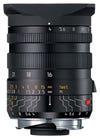
LEICA-M8
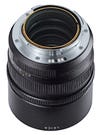
LEICA-M8
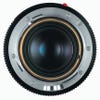
LEICA-M8
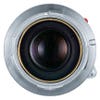
LEICA-M8

LEICA-M8

LEICA-M8

LEICA-M8

LEICA-M8

LEICA-M8

LEICA-M8